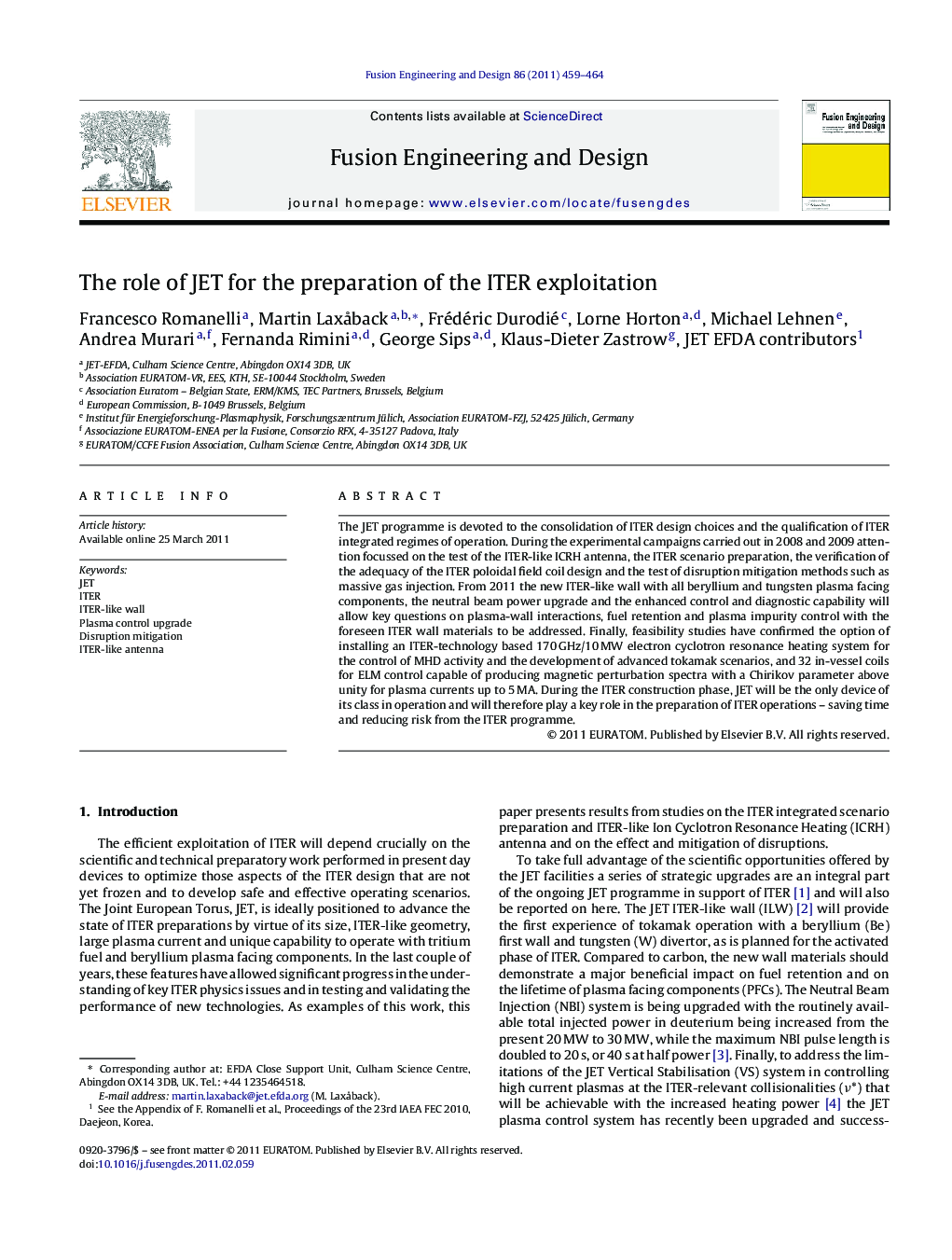| Article ID | Journal | Published Year | Pages | File Type |
|---|---|---|---|---|
| 272471 | Fusion Engineering and Design | 2011 | 6 Pages |
The JET programme is devoted to the consolidation of ITER design choices and the qualification of ITER integrated regimes of operation. During the experimental campaigns carried out in 2008 and 2009 attention focussed on the test of the ITER-like ICRH antenna, the ITER scenario preparation, the verification of the adequacy of the ITER poloidal field coil design and the test of disruption mitigation methods such as massive gas injection. From 2011 the new ITER-like wall with all beryllium and tungsten plasma facing components, the neutral beam power upgrade and the enhanced control and diagnostic capability will allow key questions on plasma-wall interactions, fuel retention and plasma impurity control with the foreseen ITER wall materials to be addressed. Finally, feasibility studies have confirmed the option of installing an ITER-technology based 170 GHz/10 MW electron cyclotron resonance heating system for the control of MHD activity and the development of advanced tokamak scenarios, and 32 in-vessel coils for ELM control capable of producing magnetic perturbation spectra with a Chirikov parameter above unity for plasma currents up to 5 MA. During the ITER construction phase, JET will be the only device of its class in operation and will therefore play a key role in the preparation of ITER operations – saving time and reducing risk from the ITER programme.
